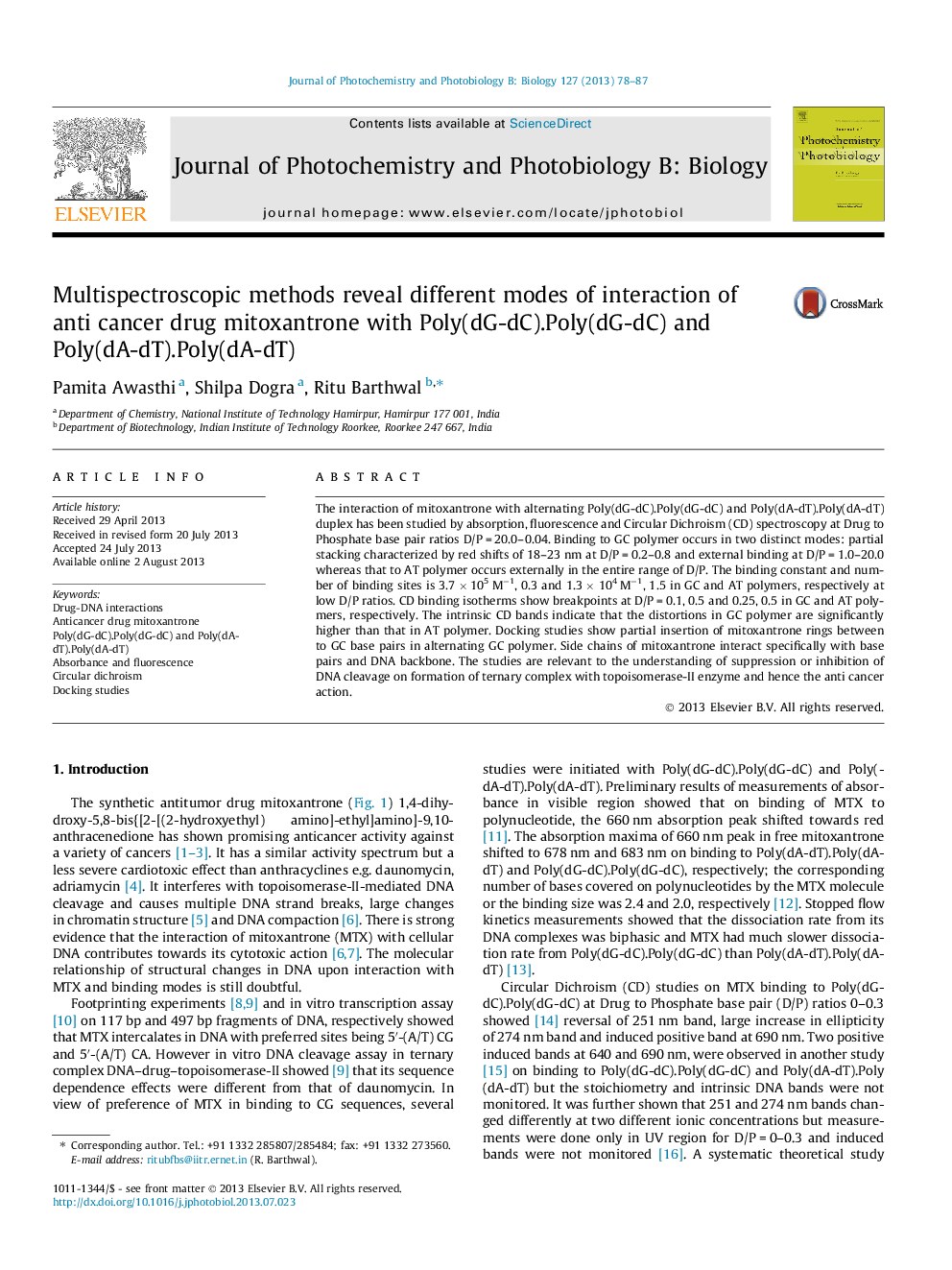| Article ID | Journal | Published Year | Pages | File Type |
|---|---|---|---|---|
| 30326 | Journal of Photochemistry and Photobiology B: Biology | 2013 | 10 Pages |
•Partial stacking and external binding of mitoxantrone with Poly(dG-dC).Poly(dG-dC).•Single external mode of binding of mitoxantrone with Poly(dA-dT).Poly(dA-dT).•Intrinsic CD bands depict significantly high distortions in GC polymer on binding.•Docking shows partial intercalation of mitoxantrone with bases of GC polymer.•Side chains of mitoxantrone show specificity of interaction with bases of DNA.
The interaction of mitoxantrone with alternating Poly(dG-dC).Poly(dG-dC) and Poly(dA-dT).Poly(dA-dT) duplex has been studied by absorption, fluorescence and Circular Dichroism (CD) spectroscopy at Drug to Phosphate base pair ratios D/P = 20.0–0.04. Binding to GC polymer occurs in two distinct modes: partial stacking characterized by red shifts of 18–23 nm at D/P = 0.2–0.8 and external binding at D/P = 1.0–20.0 whereas that to AT polymer occurs externally in the entire range of D/P. The binding constant and number of binding sites is 3.7 × 105 M−1, 0.3 and 1.3 × 104 M−1, 1.5 in GC and AT polymers, respectively at low D/P ratios. CD binding isotherms show breakpoints at D/P = 0.1, 0.5 and 0.25, 0.5 in GC and AT polymers, respectively. The intrinsic CD bands indicate that the distortions in GC polymer are significantly higher than that in AT polymer. Docking studies show partial insertion of mitoxantrone rings between to GC base pairs in alternating GC polymer. Side chains of mitoxantrone interact specifically with base pairs and DNA backbone. The studies are relevant to the understanding of suppression or inhibition of DNA cleavage on formation of ternary complex with topoisomerase-II enzyme and hence the anti cancer action.
Graphical abstractInteraction of mitoxantrone with Poly(dG-dC).Poly(dG-dC).Figure optionsDownload full-size imageDownload as PowerPoint slide
